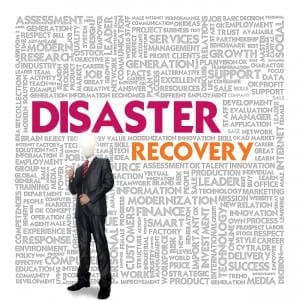Any successful business is a product of the time, sweat, and forethought that went into it’s creation . Most business plans are geared towards setting up the business and making it profitable. Once a business is successful, it should be everybody’s goal to keep it that way. A disaster recovery and backup plan is a necessity for business continuity. When disaster strikes, it creates a new dynamic for the business and all involved to respond to. The best way to respond to a new dynamic is to have a blueprint of what actions to take, and what people to involve. This is the ultimate goal of a functioning disaster recovery and backup plan. Disaster recovery planning teams need to plan to survive various types of disaster while keeping the business intact and profitable.
 Disaster Recovery: Steps for Creating a Disaster Plan
Disaster Recovery: Steps for Creating a Disaster Plan
Disaster recovery planning involves eight major steps to create a working disaster plan. Each of these major steps involves a number of related minor processes and functions. The major steps are all presented and are filled in with a sampling of some of the minor processes and functions that the disaster planning team feel would be appropriate. The major steps in the planning process are as follows:
- Organizing a team.
- Assessing the risks our company faces.
- Establishing departmental roles as relates to the disaster recovery plan.
- Developing policies and procedures for the departments to follow regarding the plan.
- Documenting the procedures to be followed in the event of a disaster.
- Preparing to handle various types of disasters.
- Training of employees, testing of the possible scenarios, and rehearsal of the response according to the plan.
- Ongoing management of the plan.
After going through the process of creating a sample plan, the team members come to see many aspects of their company in a new light. The day to day process of business can be an arduous task involving many resources, and does not often allow those involved to step back and see the big picture of what could happen in a worst case scenario. For members of a Disaster Recovery Team, it is vitally important to the company that someone should have this big picture what if point of view. What is the point in investing so much time and resource in our company if it could all be turned upside down in an instant by something as simple and commonplace as a summer wildfire? A complete and functioning Disaster Recovery Plan is a company’s best assurance of continued survival.
Disaster Recovery: Why Plan for a Disaster?
Outlined in this section are ten key points as to the importance of planning disaster recovery strategies.
- In the event of a disaster, a disaster plan will allow a company the ability to quickly and efficiently go back to a state of production by providing methodologies to lessen the impact of said disaster and a process to get the company back into a productive normal state.
- A Disaster Recovery Plan should be able to scale to the event. Meaning the plan should be able to work with an act of terror to the facility to something as simple as an employee tripping over the power cable and unplugging a few key systems.
- A Disaster Recovery Plan will put in place a means to safeguard a company’s key information assets.
- This plan will help to identify key company assets as well as to help quantify their cost/benefit to the company.
- The plan will help companies to meet government regulatory standards. This is important to maintain compliance with these standards and keep in good standings with other companies.
- A Disaster Recovery Plan will show customers that the company is serious about success and give them added confidence about the organizations abilities to overcome any adversity.
- Due to the increased dependency of the business over the years on computerized production and research and development, in creased risk of loss if one of these systems were to go down. With a well documented Disaster Recovery Plan, its possible to mitigate any damage done to the business due to the loss of one of the said computerized systems.
- The Disaster Recovery Plan will allow for concise documentation of polices and procedures for the organization.
- For employees, the training brought about the Disaster Recovery Planning process will be valuable as it will prepare them to react quickly and intelligently in the event that a disaster occurs.
- The plan will provide a means identify key people within the organization to help out in the event of a disaster. These key people will allow the staff to have someone to “turn to” in the event that something happens to provide guidance and give direction.
